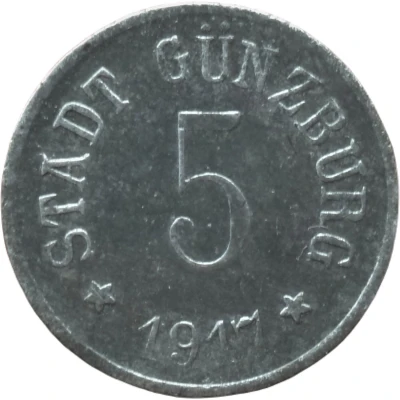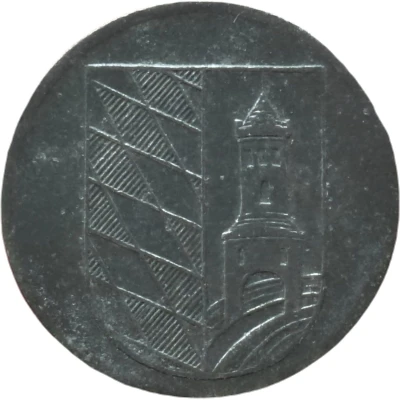


© Willem63 (CC BY-NC-SA)
5 Pfennigs - Günzburg
1917 year| Zinc | 1.4 g | 18.0 mm |
| Issuer | City of Günzburg (Federal state of Bavaria) |
|---|---|
| Emperor | William II (Wilhelm II) (1888-1918) |
| Type | Standard circulation coin |
| Year | 1917 |
| Value | 5 Pfennigs (5 Pfennige) (0.05) |
| Currency | Mark (1914-1924) |
| Composition | Zinc |
| Weight | 1.4 g |
| Diameter | 18.0 mm |
| Thickness | 0.9 mm |
| Shape | Round |
| Technique | Milled |
| Orientation | Medal alignment ↑↑ |
| Demonetized | Yes |
| Updated | 2024-10-04 |
| Numista | N#93286 |
|---|---|
| Rarity index | 85% |
Reverse
Beaded rim surrounding Coat of Arms centered
Edge
Plain
Comment
Issuing body: [Stadt, Bayern].Interesting fact
The 5 Pfennigs - Günzburg 1917 coin was minted during a time of economic turmoil in Germany, known as the "Inflationary Period" (1914-1923). During this time, the value of the German mark (the national currency) plummeted, and prices for everyday goods skyrocketed. As a result, many Germans turned to alternative forms of currency, such as local emergency currencies like the 5 Pfennigs - Günzburg 1917 coin. This coin, made of zinc and weighing only 1.4 grams, was one of the smallest denomination coins minted during this time, but it played an important role in helping people purchase basic necessities during a period of economic instability.